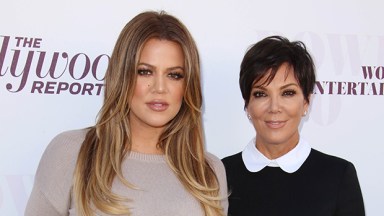JOHANNESBURG (AP) — As Lebohang Mphuthi works amid the chaos of rowdy youngsters all the way through a lunch fracture on the Omar H.S. Ebrahim basic faculty in South Africa — the youngsters are pushing, shoving and spilling meals in all places — she will’t assistance however assume how that is as a ways from her dream process as it could get.
4 years upcoming graduating with some extent in analytical chemistry, the one paintings the 26-year-old has discovered is as a scholar associate at a population faculty in Pretoria. Her duties come with handing out foods to the youngsters and restricting the chaos as perfect she will.
Mphuthi’s tale mirrors the ones of such a lot of younger South African graduates sitting at house jobless or seeking to form ends meet doing moderately menial jobs in a rustic with a 33% reputable unemployment price. It’s a determine badly at odds with the condition of a public intended to embrace the aspirations of Africa and the growing global.
“It is demotivating and frustrating,” Mphuthi stated of her fight to form exit. “You ask yourself, if we who studied are struggling to find jobs, then what about these ones who are still at school?”
In a South African context, Mphuthi may well be thought to be fortunate with the $215 she earns a day.
Analysts say the reputable unemployment quantity doesn’t even depend those that have giving up on discovering paintings and dropped off the grid and {that a} extra correct review could be that just about 42% of South Africa’s working-age community is unemployed.
South Africa has the absolute best unemployment price on the earth, in keeping with the International Deposit, outstripping Gaza and the West Deposit, Djibouti and Kosovo.
In relation to adolescence unemployment, the velocity is 61% of 15- to 24-year-olds, in keeping with reputable statistics, and a staggering 71% in case you once more depend those that are now not attempting.
Isobel Frye, government director of the Social Coverage Initiative in South Africa, which researches poverty and unemployment, stated it equates to 24 million adults out of a community of 60 million who’re both unemployed or now not desirous about any financial task and infrequently surviving.
A United International locations file on unemployment in South Africa that was once dropped at Deputy President Paul Mashatile terminating day described the condition as a “ticking year bomb.”
“We need to ask ourselves why this was once allowed to occur,” Frye said.
South Africa’s GDP needs to grow by 6% a year to start creating enough jobs just for the 700,000 people who enter the workforce every year, according to Duma Gqubule, a financial analyst who has advised the South African government.
South Africa’s growth hasn’t approached that much-needed figure for more than a decade. Its economy — which grew by 2% last year — is expected to grow by less than 1% this year and between 1% and 2% for the next five years.
Gqubule and Frye believe there are policies that would ease unemployment but have expressed exasperation that the problem isn’t a top priority for everyone from the government to private businesses and every South African given the country’s massive problems, including poverty, inequality and an epidemic of violent crime.
“People just don’t want to talk about this crisis,” Gqubule said when he appeared on national television to reflect on the U.N. report.
The U.N. report didn’t come as a surprise. Unemployment was high 30 years ago and has been trending up. The COVID-19 pandemic ripped jobs away from more than 2 million South Africans in a devastating blow, according to government statistics. However, there were warning signs long before that.
The pandemic didn’t cause 46-year-old Themba Khumalo’s problems. He lost his job as a machine operator in 2017 and now tries to support his wife and two children by collecting metal and plastic containers anywhere he can find them to sell in bulk for recycling.
“There are too many guys sitting at home without work,” Khumalo stated as he beaten some steel cans together with his worn-out paintings boots within the yard of his house at the outskirts of Johannesburg. He shakes his head on the dearth of the per thirty days $18 he receives in unemployment advantages. His one dazzling word is that neighbors incessantly reduce unoccupied meals cans out of doors his space for him to recycle.
One of the crucial govt’s insurance policies to battle unemployment helps younger marketers get started companies. Pearl Pillay of the Adolescence Lab think-tank, which specializes in bettering alternatives for younger folk, stated unutilized companies aren’t getting off the farmland.
“Yet that is kind of our fix-all solution to unemployment,” Pillay said.
In the Johannesburg township of Soweto, Mothibedi Mohoje’s internet cafe is almost always busy as it mainly caters to people who need its computers to apply for jobs. Unemployed Thato Sengoatsi, 25, spends a lot of time there.
Sengoatsi and school assistant Mphuthi are among South Africa’s “Born Separate” generation — born after the apartheid system of racial segregation ended in 1994 and who have only known a free South Africa. Their lives started in the dawn of democracy when Nelson Mandela was president and hope filled the air.
But unemployment has cast its shadow on the future of millions of South Africa’s Black majority in 2023. Sengoatsi didn’t live through apartheid, but he knows bringing it down promised something.
“The generation that came before us protested … so that we could have a better life. But we are not getting that life, and we cannot hide that fact,” Sengoatsi said.
There’s clear desperation. When the premier of the economic hub province of Gauteng announced last month that he was offering jobs for 6,000 unemployed young people, more than 40,000 waited in the winter cold to apply. More than 30,000 were set for rejection.
And there’s anger.
Warning of how unemployment threatens the country’s stability, the U.N. referred specifically to a week in 2021 when riots and looting left more than 350 people dead in South Africa, the worst violence since the last days of apartheid.
But it was an extreme version of the protests rooted in poverty and joblessness that South Africa experiences almost weekly, and which see so many Black Born Frees tearing at the fabric of a post-apartheid society that also isn’t giving them a chance.
It’s a “tinderbox,” Frye said of South Africa, waiting for any spark to set it off. Like the jailing of former President Jacob Zuma, the starting point for the 2021 riots. Or a minibus taxi driver strike this month in Cape Town that caused a week of deadly violence, with many rioters not working in the same field. At the center of both those violent eruptions and most of the others, there are jobless young South Africans.
The fact that South Africa’s first generation of Born Frees — now in their mid to late 20s — are living in the country with the world’s worst unemployment rate is “the most heartbreaking betrayal of the promises and dreams of our liberation,” Gqubule wrote.
And there is concern over the future of young generations.
Mphuthi, still young herself, worries about what lies ahead for the children she cares for at the elementary school.
“We have a problem right now,” Frye stated, “however we’ll have a large sickness in 5, 10, 15 years’ year the place it’s simply unthinkable what that suggests for the construction of crowd.”
___
AP Africa information: https://apnews.com/hub/africa







